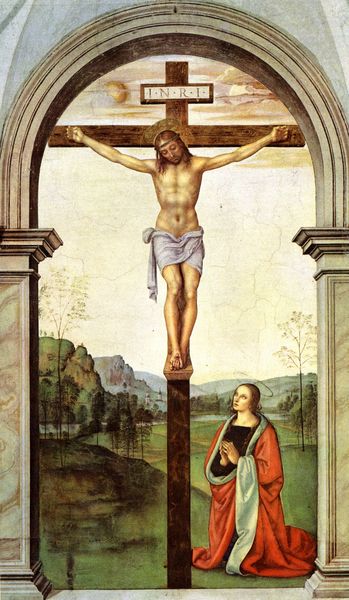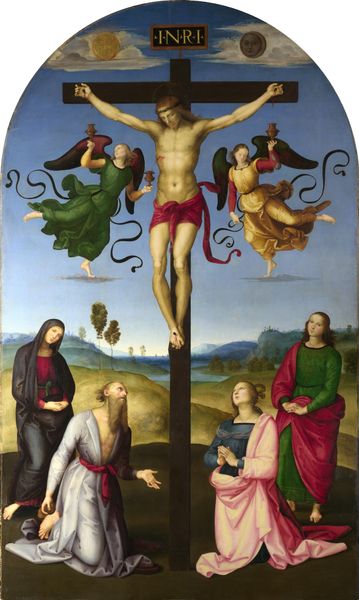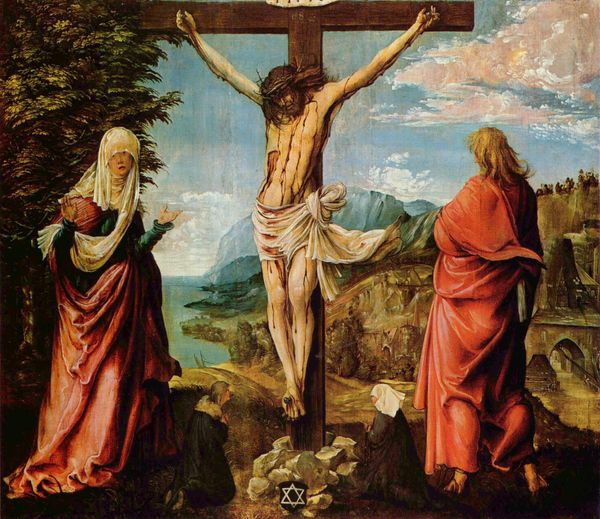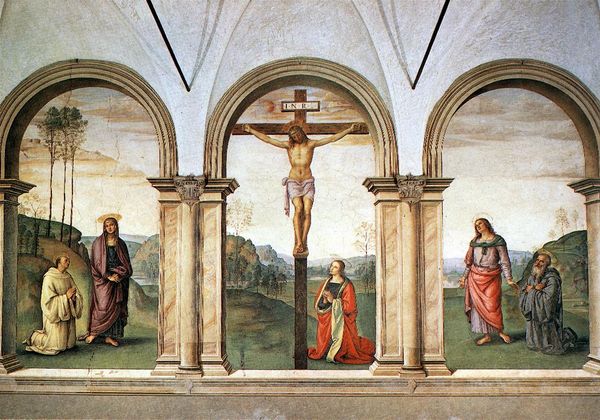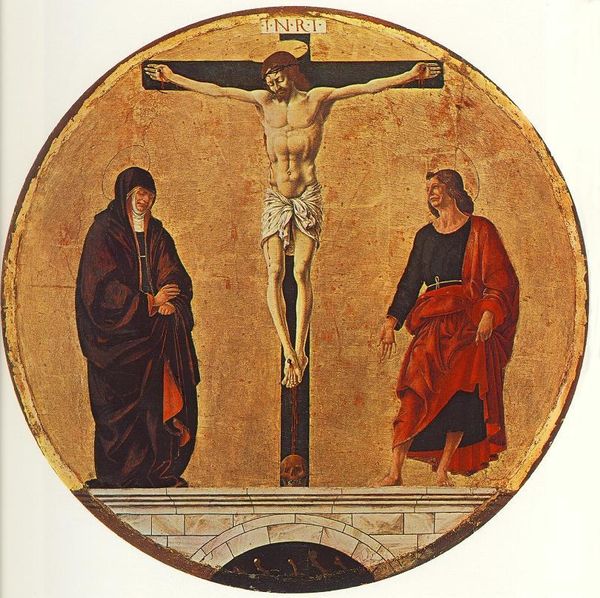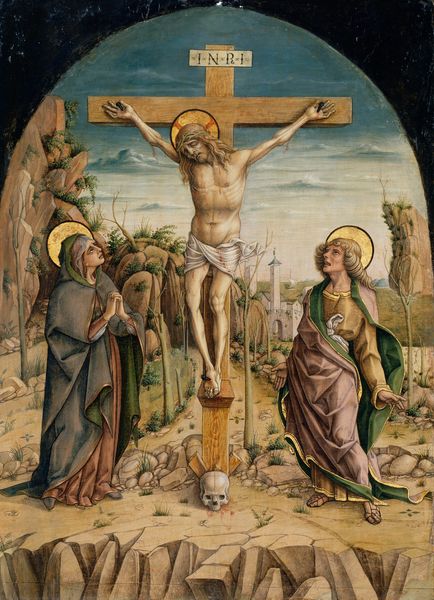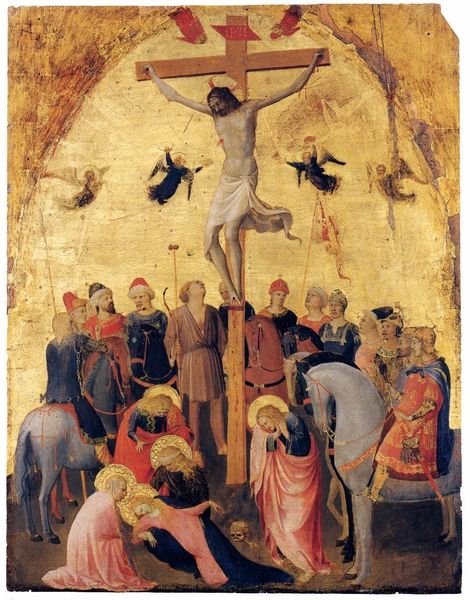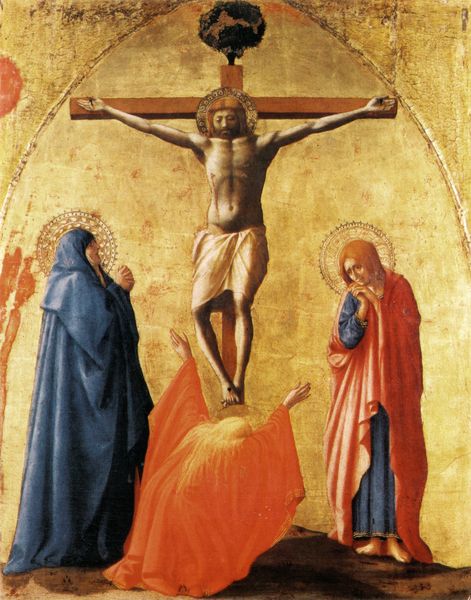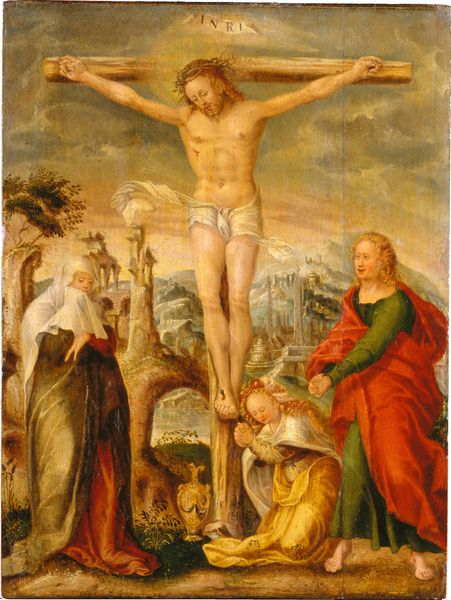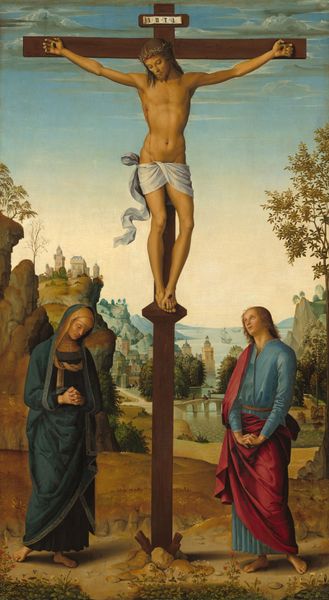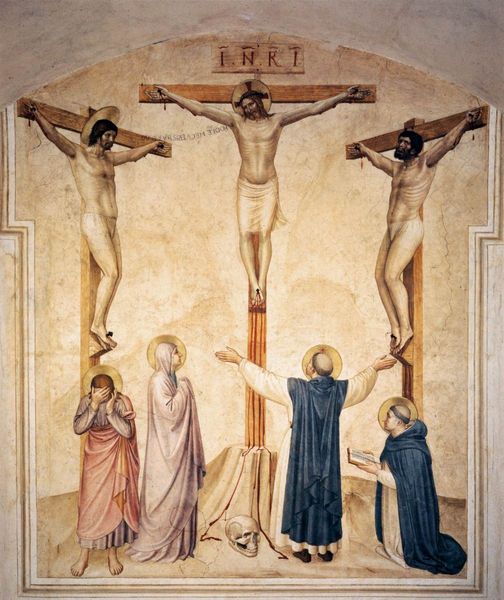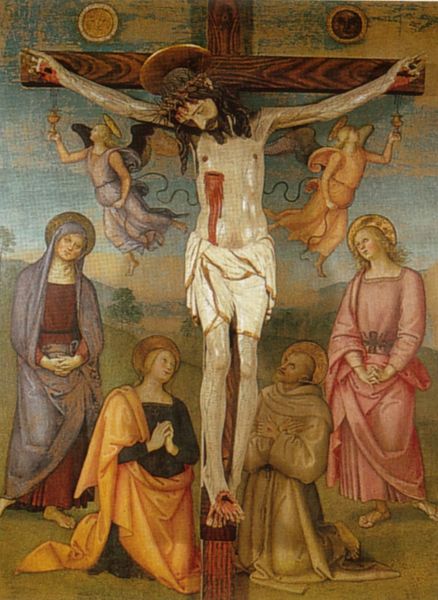
oil-paint
#
portrait
#
oil-paint
#
landscape
#
figuration
#
oil painting
#
christianity
#
history-painting
#
italian-renaissance
#
early-renaissance
#
portrait art
#
christ
Copyright: Public domain
Curator: The “Galitzin Triptych” by Pietro Perugino, painted around 1485. A very serene piece, even considering the central panel depicts the crucifixion. Editor: Serene, yes, but that incredible ultramarine used for the Virgin’s robes—it immediately strikes me. Sourcing that pigment was a whole enterprise, think of the trade routes, the labor... and the statement it makes to use such a precious material. Curator: Precisely. And its symbolic weight! Blue consistently represents holiness, divinity. Perugino understood the visual cues expected for sacred art; it was an intrinsic part of the messaging. Consider too, the symmetry—the composition practically vibrates with religious meaning. The flanking panels mirror each other—an almost classical composure despite the overtly Christian subject matter. Editor: It's fascinating how this piece blurs those lines between the divine and the everyday. The landscapes in the side panels feel so grounded, tangible, like places that one could actually walk into, even as they frame figures heavy with symbolic baggage. I can imagine apprentices grinding pigments, preparing gesso, each contributing their labor to the overall effect. Curator: A point well taken! Perugino likely ran a busy workshop, carefully managing quality while meeting demands for his popular style. But do consider the emotional effect generated through formal means; the slightly lowered gaze of all the figures... humility in visual form. These details served a key purpose, instilling piety in the viewer. Editor: It makes me wonder about the economic aspect, too. How did commissions like this circulate value? I bet these commissions from wealthy patrons like Galitzin not only created artwork but also facilitated relationships across material lines, tying the patrons in an alliance of symbolic display. The cost alone… a demonstration of both power and faith, all wrapped in a tangible object. Curator: Ultimately, "The Galitzin Triptych" reflects a deeply embedded belief system visually articulated through Early Renaissance ideals of beauty and harmony. Editor: Leaving us with something profoundly beautiful built from combined labor and complex economic dynamics of the 15th century.
Comments
No comments
Be the first to comment and join the conversation on the ultimate creative platform.
